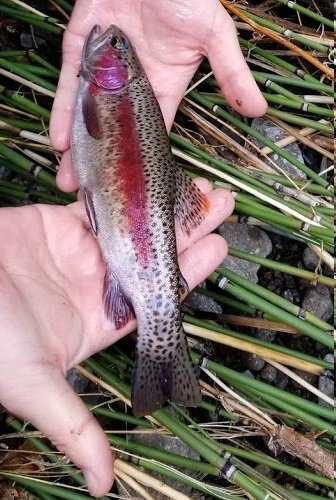
Redband trout can come from extreme environments where summer maximum water temperatures approach levels lethal for most fish. If environmental conditions change dramatically in the future, these populations may not possess sufficient genetic diversity to endure. On the other hand, these populations may contain individuals that have the physiological capacity (phenotypic plasticity) to survive extreme conditions.
Although models of species distribution are already used by various entities in a variety of ways, these models do not take into account the capacity of species to adapt to changing environmental conditions, such as temperature or rainfall. To date, researchers have documented over 20,000 redband trout tissue samples which were collected over a period of several decades (i.e. legacy data) from across redband trout habitats in Idaho. Key fish tissue samples will be analyzed to help to develop agent-based models that can more accurately predict distribution of both animals and plants.
Researchers will model key genetic information from tissue samples to predict the adaptive capacity of trout populations in ways that will be widely applicable to other species, including endangered species, pests, pathogens, forests, crops, and more. The models will also be useful in habitat restoration efforts, such as restoring rangelands or forests following wildfires.
Idaho researchers are now using genetic analysis of old trout tissue samples collected in past decades to better understand the effects of environmental conditions on genetic diversity in current and future trout populations.
